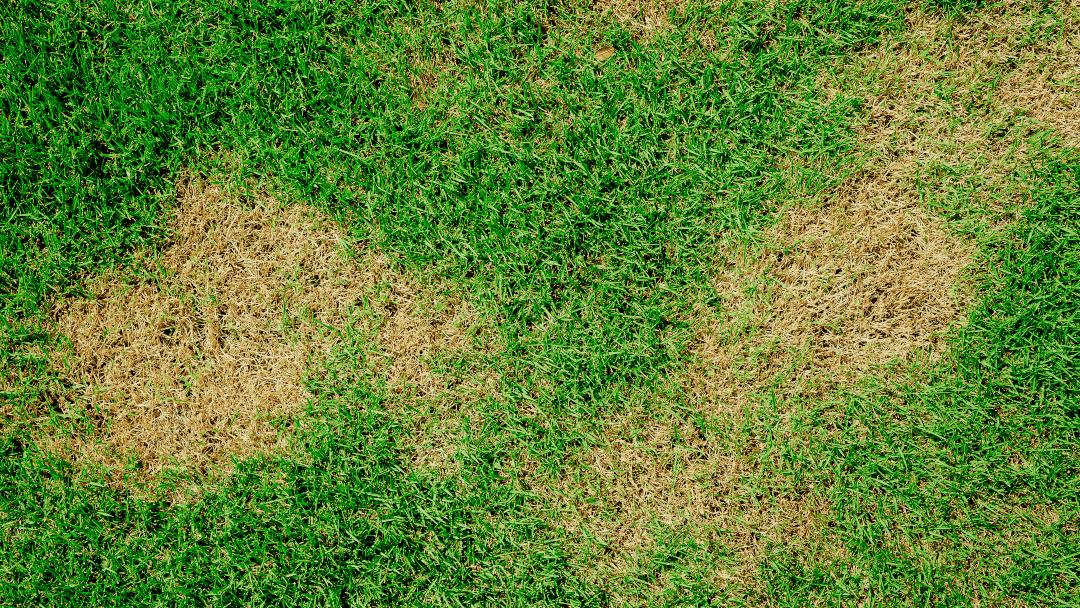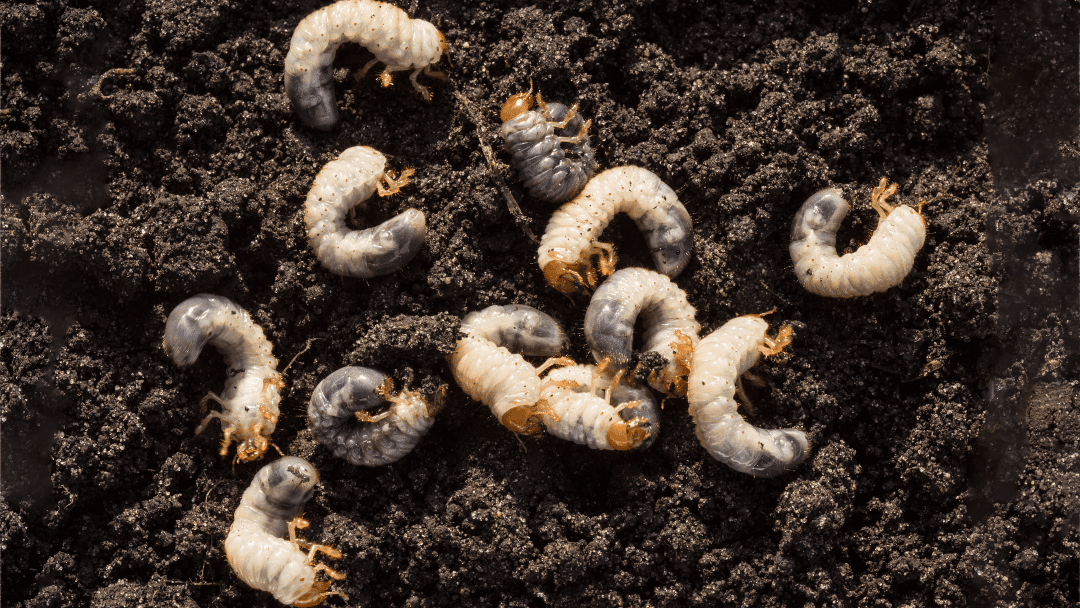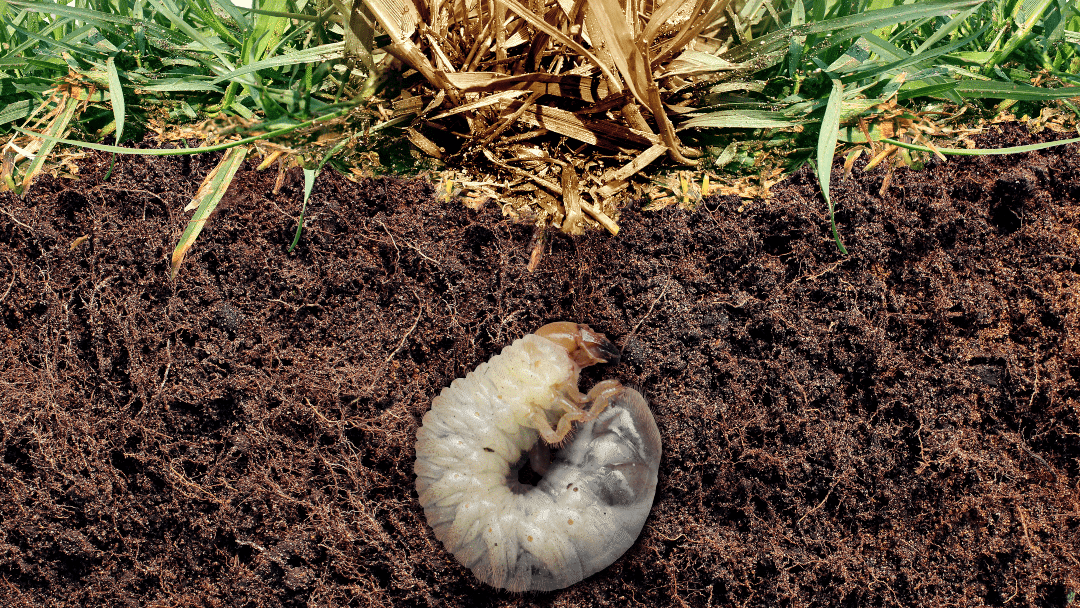Got Grubs?
How can I tell if my lawn has grubs?
Lawn grubs, often called white grubs, feed on the roots of your grass and cause the most damage in the spring and fall. Eventually, they destroy enough root material and cause the grass to die off, leaving an undesirable brown patch. These patches feel spongey to the touch and the dead grass can easily be pulled up like a rug. To search for grubs, check the top few inches of your soil underneath the brown patches. Some grubs are normal, but they become a problem when there are 10 or more per square foot. Grubs are a tasty treat for animals like raccoons, skunks, and birds, so you might also find signs digging in your turf.
What is a grub?
Grubs are the larva of different types of scarab beetles, such as Japanese beetles, June bugs, or chafers. The C-shaped grubs have soft, white bodies, darker heads, and six legs. They can grow to be around 1 inch in length. The beetles lay their eggs in your lawn in mid to late summer. In the fall, their eggs hatch, and the grubs begin to feed on the roots of your grass. As the weather starts to cool, they will burrow deep into the soil, only to return in the spring. At this time, they awaken and begin feeding again. They soon pupate and turn into beetles, starting the cycle over again by laying their eggs in the summertime.
How can I get rid of them?
Grubs will not go away on their own and they should be treated as soon as they are discovered. For immediate results, the best way to treat them is by using a spreader to apply a granular insecticide that both prevents and eliminates grubs. The insecticide begins working after contact with water and provides grub control within 24 hours. It is easy and reliable. Another way to treat grubs is by using beneficial nematodes, which are microscopic roundworms that have grub-killing bacteria in their gut. While this method can be effective, the nematodes will not survive without optimal temperatures and humidity levels, which can be an issue with Ohio’s ever-changing weather. Milky spore is a bacterial method of grub control that only works on Japanese beetle grubs. It takes two seasons of regular applications to build up the bacteria, and in the meantime, the problem may worsen. Once the milky spore bacteria are developed, though, they will continue to protect your lawn for about ten years.
How do I repair the damage?
Once grubs are eliminated from your lawn, the next step is to repair the damage they caused. Sometimes, simple grass seed and adequate watering will do the trick, but the best results are seen with regular fertilization and yearly insecticide treatments. To prevent grubs, the insecticide is applied at a lower concentration than it would be if you had an existing grub problem. This regimen will make your lawn more resilient, help the grass grow back faster, and deter beetles from laying their eggs in your lawn again next summer.
The Bottom Line
Grubs are beetle larvae that kill patches of your grass by feeding on its roots. Your lawn can handle some grubs but will require treatment if there are 10 or more per square foot. Granular insecticide applications, consistent lawn fertilization, and seeding damaged areas is one effective regimen for controlling grubs, but there are organic options out there as well.


